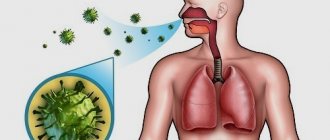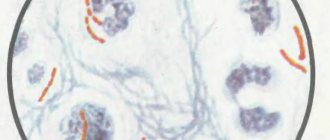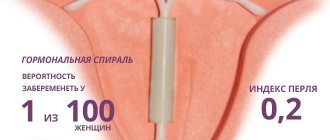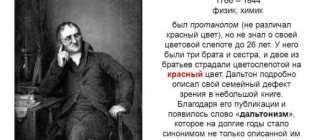Disease treatment and prevention
Most often, sinusitis can be managed using conservative methods. In rare cases, surgical intervention becomes necessary. In general, the process is aimed at eliminating the pathogen, if there is an infection, as well as any other factors in the development of the disease. Besides:
- Eliminate symptoms
- Helps the sinuses work
- Prevent complications
- Prevents the disease from becoming chronic.
In the standard course of the pathology, the patient does not need to go to the hospital; it is enough to visit an otolaryngologist. Seriously ill patients are admitted to the hospital. Treatment consists of antibiotics, antiviral drugs, antimycotin (if the cause is fungi), and antihistamines for parasitic infestations.
Nasal drops, special sprays and corticosteroids are also used. After the acute phase ends, some patients are prescribed warming, inhalations and other elements of physiotherapy. In relatively severe cases, patients use the sinus evacuation technique, in other words, they undergo lavage.
Finally, if the process is particularly prolonged, then the outflow of exudate is helped mechanically, with the help of puncture and drainage. If absolutely nothing helps, then surgery is prescribed. To prevent all this from happening, you need to take care of prevention, which consists of high-quality and timely treatment of other diseases, such as colds, allergies and dental pathologies.
In addition to this, it would not hurt to practice hardening, clean the mouth regularly and according to all the rules, and also avoid hypothermia, as this will place a person at risk.
Traditional methods of treatment
Treatment of sinusitis - advice from traditional medicine
Traditional methods are also very effective, but they can only be used with the permission of a doctor and in addition to the main treatment prescribed by a specialist.
Nasal rinsing. It can be done using the following solutions:
- furatsilin
- saline solution
- dry menthol solution
- chamomile decoction
- propolis solution
- juice of beets, onions, carrots, black currants or cranberries, diluted with water
Inhalations. Inhaling healing vapors is also extremely useful, and for this you can use the following solutions and decoctions:
- bay leaf decoction
- decoction of a mixture of celandine, chamomile and plantain
- decoction of a mixture of calendula, eucalyptus and raspberries
- a decoction of a mixture of St. John's wort, chamomile, yarrow and celandine
- essential oils of geranium, mint, tea tree, eucalyptus, pine, fir
Useful video - Treatment of sinusitis.
Compresses. They are applied to the affected sinus area and help relieve swelling and inflammation. The following compresses can be used:
- hot clay cakes
- a napkin or tampon soaked in a decoction of bay leaves
- flatbread made from grated propolis and thick honey
- a napkin or tampon soaked in fresh radish juice and then in vegetable oil
Possible complications
Consequences of improper treatment
It is extremely important to begin treatment for sinusitis in a timely manner, since the disease can develop into other, more dangerous forms, including the following:
- Abscess of the orbit. Since sinusitis is a purulent inflammation, the masses can penetrate through the bone partitions and break out into other tissues, so the inflammation spreads to neighboring organs. The closest organ to the maxillary sinuses is the eyes, so inflammation can easily spread to them.
- Meningitis. This is one of the most dangerous complications, since purulent inflammation spreads to the soft membranes of the brain and spinal cord.
- Acute otitis. Through the pharynx, the infection enters the middle ear through the Eustachian tube and causes acute inflammation there.
- Sepsis. This is a blood infection that occurs in the presence of a purulent focus of inflammation and a sharp decrease in immunity. Bacteria enter the bloodstream and spread throughout the body, causing inflammation in other organs.
Methods for preventing sinusitis are simple and banal. Strengthen your immune system through sports and proper, balanced nutrition. Do some exercise, jogging, start going to the pool or gym regularly, and finally, at least just take active walks in the forest more often. Eat fresh fruits and vegetables, maintain a balance of proteins, fats and carbohydrates.
To avoid sinusitis due to problem teeth, visit the dentist regularly and carefully monitor your oral hygiene.
Noticed a mistake? Select it and press Ctrl+Enter to let us know.
Sinusitis in children: symptoms
Sinusitis manifests itself in different ways and is affected by:
- Form of the disease. The acute nature of the disease entails pronounced symptoms, while the chronic nature involves symptoms of a more subdued nature.
- Baby's age.
The development of the paranasal sinuses can take two to three years of a child's life. The most common cause of pathology in a child of this age is a viral infection. Symptoms in this case are mild, the disease proceeds without complications and decreased health. Otitis media often appears after sinusitis.
Older children may suffer from involvement of any paranasal sinus due to their full development. Often the inflammatory process manifests itself in several cavities at once, often all sinuses are affected. Sinus lesions in the singular can be found much less frequently.
Symptoms of the disease:
- Purulent discharge, which causes the mucus to turn yellow-green.
- Decreased olfactory sensations.
- Frequent dryness in the throat, due to which the child begins to cough (especially at night).
- The duration of a runny nose is more than two weeks.
- An increase in temperature in the case of an acute process. Chronic sinusitis rarely presents with this symptom.
- Painful sensations in the nasal area, acute headache.
- Poor health: lethargy, disrupted eating and sleeping patterns.
- Difficulty breathing.
Sinusitis in childhood
Unlike adults, the nasal sinuses in babies are poorly developed, so mucus rarely stagnates in them. Under the age of 3 years, sinusitis is most often bacterial in nature. In addition, acute maxillary sinusitis occurs much less frequently in children than in adults. In this case, the recurrence of a chronic runny nose is often accompanied by inflammation of the middle ear.
Sinusitis in young children is quite difficult to diagnose. The child’s inability to clearly complain about pain and describe how he feels prevents parents from recognizing the problem. But despite this, it is possible to guess that a baby has sinusitis. Babies who suffer from acute sinusitis breathe heavily. Breasts become restless and capricious, sleep poorly, often refuse to eat and drink - a stuffy nose prevents them from sucking normally on the breast or pacifier.
Older children are already able to tell what worries them and characterize their condition. Toddlers and preschool children more often suffer from inflammation of several sinuses at the same time. With general damage to sinusitis, blood may appear in the purulent mucous discharge.
Other common symptoms of acute sinusitis in childhood, in addition to nasal congestion, include:
- photophobia;
- decreased sensitivity to odors;
- dryness and sore throat;
- frequent cough at night;
- high body temperature;
- increasing irritability in the evening.
Children have difficulty with exacerbation of maxillary sinusitis. During illness, attention deteriorates, memory and learning ability decrease. The baby does not sleep well at night and may snore.
Types of sinusitis
Sinusitis is the general name for pathological processes accompanied by inflammation of the nasal sinuses. Depending on which sinuses are affected, that is, on the location of the infectious focus, several types of sinusitis are distinguished:
- Sinusitis is an inflammation of the maxillary (maxillary) sinuses with the formation of purulent secretion in one or both sinuses.
- Sphenoiditis is a lesion of the sphenoid sinus with general symptoms of sinusitis.
- Frontal sinusitis is a disease localized in the frontal sinuses (the distinctive symptom is intense pain in the forehead and temples).
- Ethmoiditis is inflammation of the ethmoid labyrinth cell.
Sinusitis is also classified by the number of sinuses affected by the pathogenic process:
- Polysinusitis is an inflammatory process that involves two or more paranasal sinuses.
- Hemisinusitis is a unilateral lesion of all sinuses.
- Pansinusitis is a rare phenomenon, which is an inflammatory lesion that affects all paranasal sinuses.
Forms of catarrhal sinusitis according to ICD-10 code
Depending on the duration of the disease and the severity of the clinical picture, 3 forms of catarrhal sinusitis are traditionally distinguished - subacute, acute and chronic. In the absence of competent therapy and weak body defenses, the disease intensifies . This leads to a decrease in quality of life and provokes complications.
Subacute
It is difficult to distinguish it from a cold, which delays the necessary diagnosis. The duration of this form can be from 2 to 4 weeks, then the process becomes chronic or complete recovery occurs.
Symptoms are mild and there is no likelihood of developing side pathologies.
A healthy adult body, with minimal therapeutic intervention, is able to independently cope with the subacute form of sinusitis.
Spicy
The autumn-winter period is also observed against the background of outbreaks of infectious respiratory diseases (ARVI). The course of the acute form lasts from 14 days to 1 month, the duration directly depends on the treatment. Active inflammation of the sinus mucosa occurs, and a large amount of discharge with yellow or green splashes is released. Body temperature may rise within subfebrile ranges. In the MBK-10 disease classifier, acute sinusitis is coded J01.
Chronic
It is characterized by a paroxysmal course with constant relapses and remissions. The maxillary sinuses become inflamed and filled with pus, which leads to severe congestion and aching pain. Nasal drops and sprays provide short-term relief . During exacerbation, body temperature rises and performance decreases. If treatment and prevention are ignored, complications develop in the visual and auditory analyzers and the respiratory system. According to ICD-10, this form has code J32.
You can learn about what can contribute to the development of a disease such as allergic sinusitis here.
What are sinuses or paranasal sinuses?
Sinuses (aka paranasal sinuses)
- these are air-filled spaces located next to the nose, inside the facial bones: between the eyes, inside the forehead, cheeks, and deep in the nose.
The inside of the sinuses is lined with special epithelial cells containing tiny hairs called cilia on their surface. In addition to the ciliated epithelium, the mucous membrane of the sinuses also contains other cells that produce mucus. Mucus is a natural trap for germs and other contaminants, and the cilia constantly push this mucus towards the exit of the sinuses, into the nose, thereby continuously clearing the sinuses of everything unnecessary. The sinuses are connected to the nasal cavity by narrow openings (see picture).
Video: Frontal sinus.
https://youtube.com/watch?v=iN9mwTLDrFY
The video shows the final stage of surgery on the frontal sinus - DRAF 2a. Video provided
Klimenko Ksenia Eldarovna
Infection and inflammation of the sinuses causes the mucus to become thick and clog the openings of one or more paranasal sinuses, preventing air exchange in them and the outflow of mucus. Viscous exudate accumulates under high pressure in the sinuses. This exudate is a favorable environment for the development of bacteria; they multiply in it and affect the mucous membrane of the sinuses. All this is called sinusitis.
Sinusitis can be chronic (long-term or frequently recurring) or acute. Acute sinusitis lasts no more than three weeks and occurs no more than three times a year. Acute sinusitis is extremely common. As a rule, it is caused by acute respiratory viral infection (ARVI).
Inflammation and swelling of the mucous membrane of the paranasal sinuses can be caused by:
- Viral infections such as colds.
- Allergies.
- Air pollution and cigarette smoke.
- Dental infections.
- Narrowing or blockage of the openings between the sinuses and the nasal cavity, such as nasal polyps.
Symptoms of sinusitis
Typical symptoms of acute sinusitis include nasal congestion, thick green nasal discharge, fever, headache, general malaise and facial pain. Some symptoms depend on which sinus is inflamed. For example:
- Frontitis
(inflammation of the frontal sinus) can cause pain in the forehead, which gets worse when bending forward or lying on your back. - Ethmoiditis
(inflammation of the ethmoid sinus located behind the bridge of the nose) can cause pain between the eyes, swelling of the eyelids, loss of smell, and pain when pressing on the bridge of the nose. - Sphenoiditis
(inflammation of the sphenoid sinus located behind the eyes) can cause ear pain, neck pain, or a headache at the top of the head or deep behind the forehead. - Sinusitis
(inflammation of the sinuses located under the cheek) can cause pain in the cheeks, under the eyes, or in the upper teeth and upper jaw.
Diagnosis of sinusitis
Sinusitis is quite difficult to detect in the early stages, since a common cold can have similar symptoms. Both sinusitis and colds can cause nasal congestion and general malaise. However, colds usually tend to improve significantly within five to seven days, while sinusitis can last more than three weeks without treatment. Additionally, a sinus infection usually causes green nasal discharge, fever, and facial pain.
Your doctor can usually make a diagnosis of acute sinusitis based on your symptoms, medical history, and a routine physical examination. The doctor will ask about your symptoms and their duration, examine your ears, nose and throat, and press on certain points on your face to check for tenderness in the projection of the sinuses.
If your doctor is unsure of his diagnosis, he may use additional tests. For example, a doctor may insert a nasopharyngoscope (a thin tube with a video camera at the end) into the nose and examine the inside of the nose.
Sinus x-rays and computed tomography (CT) scans may also be helpful in diagnosing sinusitis.
The doctor may need a general blood test to study the condition of the peripheral blood and assess the severity of inflammation.
Treatment of unilateral sinusitis
Sinus puncture procedure
Treatment of unilateral sinusitis often occurs at home, having received appropriate medical recommendations. Only complicated variants with a severe course require hospitalization in the otolaryngology department of the hospital. Treatment of the disease is carried out through the use of medications and physiotherapeutic procedures. Surgical treatment - wide opening and drainage of the affected sinus is necessary when the purulent lesion spreads to adjacent organs.
Treatment principles:
- restore the drainage hole-communication of the maxillary sinus with the middle nasal meatus;
- apply active release of the sinus from purulent contents with the introduction of drugs into it;
- antibiotic treatment;
- taking antihistamines;
- detoxification treatment for severe sinusitis;
- treatment with antiseptics;
- use immunomodulators and immunostimulants;
- taking symptomatic medications;
- physiotherapeutic treatment;
- rehabilitation of foci of infection (pulpitis, periodontitis, tonsillitis).
For therapeutic purposes, in case of purulent sinusitis, a sinus puncture is performed and, after freeing it from pathological contents, a medicine is administered. This is the “gold standard” in providing medical care to the victim, since according to the law of a closed space, which is the paranasal sinus, foreign content, as it accumulates, must necessarily find a way out.
And if a drainage puncture is not performed, then the purulent accumulation can break into neighboring cavities, melting the surrounding tissue. After freeing the sinuses, it is washed with antiseptic solutions: furatsilin, potassium permanganate, boric acid. Antibiotic solutions are also used - chloramphenicol.
After the puncture, it is important to adhere to a certain regime: do not overcool, avoid cold drinks and heavy physical labor. To maintain the body, a complex of multivitamins, including ascorbic acid, is prescribed
Treatment with physiotherapeutic methods includes the appointment of techniques with dry heat, UHF, and the use of laser therapy.
With rational treatment, the symptoms of the disease gradually subside.
Symptoms
Acute sinusitis is characterized by the occurrence of both general and local symptoms. The severity of clinical manifestations depends on the degree of development of the inflammatory process.
Common symptoms of the disease include the following:
- Headache. Its main localization is the frontal as well as the temporal lobes. Sometimes such a symptom may not be detected. In the presence of a purulent process in the paranasal sinuses, when the position of the body in space changes, the exudate fluctuates and its pressure on various structures occurs. If the pathology affects the sinus of the sphenoid bone, then the pain syndrome occurs in the middle part of the head and spreads to the occipital region. If the evacuation of purulent contents from the sinuses is not impaired, then the disease may not be accompanied by pain.
- Hyperthermia. Occurs against a background of weakened immunity.
- Poor health. It develops during the acute course of the process; patients especially often note a deterioration in their condition when a purulent infection occurs.
Local symptoms of acute sinusitis include the following:
- nasal congestion;
- an increase in the amount of discharge from the nasal passages, exudate often flows down the posterior vault of the nasopharynx;
- due to significant swelling of the mucous membrane or due to blockage of the nasal turbinates with viscous thick mucus, the olfactory function of the nose is impaired;
- nasal voice due to nasal congestion;
- a feeling of heaviness in the projection of the maxillary sinuses of the upper jaw.
In clinical practice, there are three stages of acute sinusitis. This classification is based on the level of symptomatology.
With mild sinusitis, the patient usually has only local symptoms of the disease. The doctor sends the patient for diagnostic radiography. When examining the image, abnormalities are usually not detected or are expressed to a small extent. Hyperthermia does not occur, or body temperature rises to 37-38 °C. There are no headaches. Sinusitis with an average level of severity of the process is characterized not only by local, but also by general symptoms, which are expressed by the syndrome of intoxication of the body: high temperature occurs, the patient’s well-being worsens, weakness, headaches, and drowsiness occur. Sometimes a person develops swelling on the eyelids, as well as on the skin located next to the maxillary sinus.
Severe acute sinusitis is rare because it takes time to develop. However, if the patient does not promptly consult a doctor for help with the initial signs of the disease, the pathology can quickly worsen, leading to complications. A person with a severe degree of the disease suffers from febrile or pyretic fever, he shows signs of serious intoxication, and suffers from severe headaches.
Particular attention should be paid to the symptoms and treatment of acute sinusitis in children, since due to the porous structure of the bones, the infection easily spreads through the intraosseous structures. This can lead to rapid progression of the disease, and in the absence of complex therapy, to severe consequences of the disease.
Causes
Sinusitis is a disease of multifactorial etiology. It can develop due to a number of reasons. The most common of them:
- allergic reaction;
- infection with a viral, bacterial or fungal nature;
- entry of a foreign body into the maxillary sinus;
- congenital anomalies of the respiratory system;
- severe or multiple mechanical damage to the nose;
- untreated or advanced rhinitis, tonsillitis.
Find all the information about viral sinusitis here.
Sinusitis is diagnosed in people with weakened immune systems, for example, children, with chronic diseases of the body . The peak of infection and attacks of hay fever occurs in the autumn-spring period.
Antibacterial therapy
It is believed that if symptomatic treatment does not improve the clinical picture within 7-10 days or symptoms progress, antibiotics should be prescribed.
The use of fluoroquinolone and tetracycline antibiotics in children is of great concern to most doctors.
There are still cases of using cotrimoxazole and lincomycin in the treatment of OS. The first should be used very limitedly.
Opinions differ regarding the duration of antibiotic therapy; most consider a course of at least 10 days (up to two weeks) to be optimal.
The antiviral effect of Sinupret allows you to fight the main cause of diseases accompanied by the development of rhinosinusitis.
In the treatment of purulent rhinosinusitis, Sinupret significantly increases the effectiveness of antibiotic therapy.
Complications and consequences
In the absence of timely treatment or any errors in the therapeutic course, a progressive disease will lead to the development of quite serious consequences.
Most often, doctors note the following complications of catarrhal sinusitis:
- meningitis;
- thrombosis of the vessels of the ocular orbit;
- purulent forms of the pathological process;
- brain abscess.
Typically, the most severe consequences develop in children who have reached school age. That is why otolaryngologists advise all parents to pay close attention to any respiratory diseases of schoolchildren and adolescents.
Acute maxillary sinusitis and acute purulent sinusitis causes, diagnosis, treatment
The inflammatory process in acute sinusitis can spread to any sinus.
As a rule, older children and adults suffer from inflammation of the maxillary, ethmoid and frontal sinuses, and in rare cases, the sphenoid sinus.
To diagnose the extent of infection, an x-ray of the paranasal sinuses is taken. An endoscope is also used, with the help of a video camera the nasal cavity is enlarged, allowing one to see the localization of the inflammatory process.
What is acute maxillary sinusitis? This is a type of sinusitis in which the source of inflammation is located in the maxillary sinus. The cause of acute maxillary sinusitis (sinusitis) is a coccal infection. Its presence provokes swelling of the mucous membrane of the sinuses, which affects the normal drainage of mucus from the nose.
Stagnation of purulent exudate in the maxillary sinuses leads to an inflammatory process. Maxillary sinusitis provokes pain in the forehead in the inflamed sinuses. Inflammation of the maxillary sinuses may be accompanied by lacrimation.
For acute maxillary sinusitis, vasoconstrictor drops and sprays are prescribed as an auxiliary treatment. The main treatment involves the use of antibiotics, preference is given to the penicillin group, and in case of allergies, to the cephalosporin group.
It is important to know
The main cause of acute purulent sinusitis (rhinosinusitis) is infection with viruses of the paranasal sinuses.
The cause of the disease is not always viruses - sometimes acute purulent sinusitis occurs as a result of injuries or impaired development of the nasal septum, allergic rhinitis and infectious diseases (measles, scarlet fever, influenza, and so on).
Acute purulent sinusitis requires complex treatment with antibiotic therapy. When choosing antibiotics, one must take into account the resistance of the antibacterial group to viruses.
In addition to antibiotics, mucolytics, antihistamines and vasoconstrictors are used to eliminate acute symptoms of the disease. It will not be superfluous to use immunostimulating drugs.
Stages of exudative sinusitis
Sinusitis of the maxillary sinuses is an inflammatory disease caused by infections or colds. The pathology develops gradually. Stages:
- Alteration . Massive damage to the tissue of the ciliated epithelium begins, as a result of which the process of inflammation starts. At this stage, mediators are released, which leads to an increase in temperature and discomfort.
- Exudation . The permeability of the vascular walls increases, and cellular fluid comes out. Swelling and mucus accumulation develop.
- Proliferation . This stage is accompanied by increased proliferation of epithelial cells. The structure of the sinuses changes.
Manifestations of the disease depend on the stage of the inflammatory process. With exudative sinusitis, the second stage predominates, which is why there is abundant fluid secretion.
Prevention of sinusitis
Despite the frightening variety of complications of sinusitis, not everyone develops them. Timely detection and careful treatment of the disease will not leave the slightest chance for complications.
Prevention of sinusitis is as follows:
Avoid crowded places during periods of widespread acute respiratory infections and flu. Wear a mask if you go to crowded places
It represents the minimum level of protection; Strengthen yourself, get healthy, eat right, pay attention to sports; Give your body a rest, be less nervous. Stress and overwork are an excellent reason for the development of infection; If you have the first signs of a cold, actively treat it - drinking plenty of fluids and rest will help you get back on your feet; Do not trigger diseases of the upper and lower respiratory tract if they suddenly arise; Support your immunity in winter and autumn with vitamins and citrus fruits.
Development countries annually spend fabulous sums on preventive medicine. And this makes sense - it is much easier to prevent diseases than to get sick! Follow their example!
Lifestyle and Home Remedies
These self-help steps may help reduce sinusitis symptoms:
- Rest. This will help your body fight infection and speed up recovery.
- Drinking liquids such as water or juice. This will help reduce mucus secretions and promote drainage. Avoid drinks containing caffeine or alcohol as they can dehydrate you. Drinking alcohol can also worsen swelling of the lining of the sinuses and nose.
- Moisten the sinus cavities. Apply the towel to your head as you inhale steam from a bowl of hot water. Keep the steam directed towards your face. Or take a hot shower, breathing in warm, moist air. This will help relieve the pain and help clear up the mucus.
- Apply warm compresses to your face. Place warm, damp towels around your nose, cheeks, and eyes to relieve facial pain.
- Rinse your nasal passages.
Use a specially designed squeeze bottle (Sinus Rinse, others) or neti. This home remedy, called a nasal laser, can help clear out your sinuses. If you make your own rinse, use water that is free of contaminants—distilled, sterile, pre-boiled and cooled, or filtered using a filter with an absolute pore size of 1 micron or less—to prepare the irrigation solution. Also be sure to rinse the sprinkler device after each use with clean water and leave it open to air dry. - Sleeping with your head up. This will help relieve your sinuses, reducing congestion.
Rare complications of the disease
This is a rare complication of sinusitis, but it is possible;
- Periostitis of the orbit. Due to the location of the paranasal sinuses (especially the frontal, ethmoid, maxillary) to the walls of the orbit, we can talk about this complication as a complex consisting of periostitis and osteomyelitis of the bone formations that form the cavity for the eyeball. The disease reveals itself by general symptoms characteristic of inflammatory processes: fever, headaches, exophthalmos (the eye will move to the side), swelling of the eyelids and the infraorbital area of the face. With further development of the disease, periostitis can progress into a subperiosteal abscess. This disease is characterized by the appearance of a closed space filled with exudate. Signs of the disease may coincide with the symptoms of periostitis;
- Fistula of the eyelid or orbital walls. A fistula is a formation that allows exudate to leave closed cavities through the surface of the skin. The formation of a fistula ends with the appearance of a tract in the eyelid area. The cause is often chronic inflammation of the frontal and ethmoid sinuses;
- Phlegmon of the orbit. Phlegmon is a diffuse inflammation that does not have a clear boundary. The constant signs of this type of inflammation of the orbit are high fever, headaches, chills, and weakness. An important symptom is a painful protrusion of the eyeball, as well as loss of the ability to move;
- Retrobulbar abscess. This term refers to limited inflammation in the area behind the eyeball. The disease is characterized by general signs of intoxication; the symptoms are similar to orbital phlegmon. It can develop from periostitis of the orbital wall;
- Laryngitis, pharyngitis, bronchitis, pneumonia. All these diseases characterize the transition of the disease from the upper respiratory tract to the lower. They are characterized by a sore throat and copious sputum that is released during coughing. Acute pneumonia is characterized by all signs of intoxication, severe cough, and possible further complications.
The structural features of the human skull were described above, and therefore it is clear that such options for the development of the disease are quite possible.
What are the complications of maxillary sinusitis?
If you ignore the signs of sinusitis or start therapy late, there is the possibility of serious negative consequences:
- chronic inflammation of the mucous membranes of the larynx;
- oxygen deficiency;
- dacryocystitis;
- apnea;
- spread of the inflammatory process in the cranial cavity with subsequent brain damage;
- purulent damage to the bone tissue of the skull - in such a situation, surgical intervention is required;
- blood poisoning.
Any of the above complications can cause death.
Forms of the disease
There are several types of pathology:
Acute form of sinusitis. Develops due to complications after a viral or bacterial infection. There is severe pain in the sinus area, which intensifies when turning and tilting the head. Painful sensations, provided adequate treatment, usually last no more than a week. A high temperature of 38-38.5 °C and fever are noted. The nose is stuffy, there is a change in the voice - nasality. With proper therapy, the mucous membrane is completely restored in about 1 month.
- Subacute form. In this case, we can note a milder clinical picture and the duration of the disease up to two months. The patient has had mild symptoms of sinusitis for a long time, similar to a common cold. If no therapeutic measures are taken, the subacute form becomes chronic.
- Chronic form. It is difficult to treat and the disease lasts for several years. Develops due to improper therapy or its complete absence. We are talking about odontogenic, polypous and fungal sinusitis. Sparse symptoms are observed, with not much nasal discharge, but it is constantly present, the pain is unexpressed and dull, and there is usually no fever. Chronic sinusitis can periodically worsen and give acute symptoms.
- Hyperplastic (mixed) form of pathology. It combines different types - both purulent and allergic sinusitis. Due to the allergic process, the mucous membrane grows; polyps can also develop, blocking the anastomosis between the nasal cavity and the sinus.
Clinical manifestations of sinusitis are determined and divided according to the location of inflammation. So, the following types of this disease are distinguished:
- Development of sinusitis. The most common type of sinusitis is sinusitis. Unpleasant sensations along with pain appear in the area of the upper jaw, flowing into the teeth. Against this background, it is especially typical to experience increased pain in the evening, which subsides during sleep.
- The appearance of frontal sinusitis. Pain due to the development of frontal sinusitis is localized, as a rule, in the forehead area and usually increases in the morning.
- Formation of ethmoiditis. Painful sensations in this form of the disease accumulate in the area of the bridge of the nose and last throughout the day.
- Development of sphenoiditis. Painful sensations occur in the back of the head and intensify throughout the night.
Advanced acute sinusitis can cause serious complications, which can manifest in the form of meningitis, cavernous sinus thrombosis and retrobulbar abscesses.
Diagnostics
Recognizing acute sinusitis in the initial stages can be quite difficult. Headache, runny nose and nasal congestion are very “popular” symptoms of any ARVI. The doctor should be alert that headaches or fever occur in the patient again after an episode of acute respiratory viral infection or flu 5-7 days ago. Very often, acute sinusitis is a complication of a viral cold.
Careful questioning of the patient
It is important to clarify the nature of the pain, how it changed during the day, and whether there is a dependence on head movements. It is also necessary to clarify how the illness began and whether it was preceded by a cold or flu
A general blood test will indicate the presence of inflammation: leukocytes, band neutrophils, and ESR will be elevated. An examination by an ENT doctor is very important. Using special instruments - a nasal dilator and mirrors - the doctor can examine the nasal cavity, nasal passages, assess the degree of swelling and the nature of the discharge. X-ray of the sinuses. You should definitely take a photo if you suspect acute sinusitis. This is a very important and practically the only reliable study for inflammation of the sinuses. In the image, the doctor will see the uneven filling of air in the sinuses; with catarrhal and purulent inflammation, fluid levels in the sinuses will be visible. In more complex cases, you can even resort to computed tomography of the skull. This study is usually quite expensive, but the image quality and diagnostic accuracy are much better.
Here, in fact, are all the possible methods for diagnosing acute sinusitis. As a rule, they are sufficient to make a diagnosis.
Physiotherapy
Used as an additional method of treating sinusitis. They help speed up recovery, strengthen the immune system and enhance the effect of medications.
Effective physiotherapy:
- UHF;
- electrophoresis;
- magnetic therapy;
- UZT;
- Ural Federal District.
In addition, this type of treatment includes nasal lavage in the hospital using the “pit-catheter” and “cuckoo” methods. They are aimed at cleansing the sinuses of exudate and are carried out using special equipment in the treatment room.
Treatment of acute sinusitis
Treatment of inflammatory diseases of the paranasal sinuses is very difficult. The situation is greatly complicated by the following factors:
The sinus is a limited cavity, closed in the bones, communicating with the external environment through thin passages. Such a confined space is an ideal “greenhouse” for viruses and bacteria. When the passage connecting the sinus and nasal cavity closes, pressure increases in the sinus
It is important to diagnose this in a timely manner to prevent pus from breaking into adjacent tissues. It is difficult for medications to enter a closed cavity bounded by dense bone walls.
This is why choosing an antibacterial drug can be very difficult. Poor outflow of effusion and pus, closed sinus contributes to the transition of the process to chronic. That is why it is important to use the most effective medications and doses of antibiotics to prevent the process from becoming chronic.
How to treat acute sinusitis correctly? Firstly, in order to effectively cure acute sinusitis, you should not delay the process and self-medicate
Secondly, it is very important to observe the dosage, frequency of administration and duration of the course of antibacterial therapy
We list the main groups of drugs and points of their use.
- Antibacterial drugs. As a rule, at the stage of serous and catarrhal sinusitis, you can do without antibiotics. However, this is a rather controversial opinion. Most doctors are inclined to prescribe antibiotics preemptively or preventatively, since it is impossible to accurately distinguish catarrhal effusion in the sinus from purulent, and viral inflammation from bacterial. This can actually be done when there is inflammation of the mucous membranes that are accessible to inspection. Unfortunately, in the case of sinusitis, ENT doctors are forced to rely only on the clinic and x-ray examination, because it is impossible to look into the sinus cavity. The most correct thing is to prescribe antibacterial drugs based on the results of bacteriological culture of sinus discharge. In this case, both the causative agent of sinusitis and its sensitivity to a particular antibiotic will be obvious. In the case of sinus puncture, doctors do this. Fortunately, a puncture is not always necessary.
- Antihistamines or antiallergic drugs. In this case, the purpose of prescribing such medications is not to treat allergies, but to reduce swelling of the mucous membrane and the release of exudate. By removing swelling and reducing effusion, they reduce the likelihood of bacteria attaching.
- Anti-inflammatory drugs, usually from the NSAID group (non-steroidal anti-inflammatory drugs). These medications relieve pain, inflammation, swelling, and fever.
- Vasoconstrictor nasal drops. In case of acute sinusitis, even with partially preserved nasal breathing, instillation of drops into the nose is indicated. Vasoconstrictors also reduce swelling and serous effusion in the sinus cavity.
When should a puncture be done?
Many patients with acute inflammation are afraid to go to see a doctor, fearing a puncture or puncture. Unfortunately, in cases of purulent sinusitis, this procedure cannot be avoided. Therefore, it is better not to delay a visit to the doctor when a puncture is no longer possible. Let's list the following situations:
- Purulent sinusitis with thick pus that is unable to leave the sinus on its own.
- A closed cavity with a closed outlet channel.
- Increasing pressure in the cavity, accompanied by increased pain and the risk of pus breaking into adjacent structures.
- The need for bacterial culture of the cavity contents to determine treatment tactics.
In fact, the cavity puncture procedure only looks scary. The skin and mucous membranes are anesthetized, and the bone wall is devoid of painful endings. An experienced ENT performs a puncture for sinusitis in a matter of minutes.
Treatment at home
In the early stages, unilateral sinusitis can be treated at home. The effectiveness depends on the selected medications, adherence to the regimen and the intensity of all manipulations. The main emphasis in therapy is on taking medications, the effect of which is enhanced by physical procedures. Depending on the characteristics of the clinical picture, treatment takes from 7 to 14 days.
Treat with medication
To combat sinusitis, a whole range of drugs is prescribed, aimed at eliminating the symptoms and causes of the pathology.
The main groups of drugs to treat sinusitis:
- vasoconstrictors;
- anti-inflammatory;
- antiseptics, antibiotics;
- antipyretics, painkillers;
- mucolytics;
- antihistamines.
Some medications in topical form have a complex effect. This simplifies treatment and speeds up recovery. The choice of a specific brand of medication should be made only by a doctor based on the diagnosis, age, and severity of symptoms.
Antibiotics
They are prescribed only for sinusitis caused or complicated by a bacterial infection. The drug is actively used for local use and systemic action. Effective means:
- Amoxiclav;
- Polydex;
- Bioparox;
- Ceftriaxone.
Antibiotics are recommended for use in a limited course lasting up to 12 days. After this, you need to take a break or replace the active substance, as the bacteria develop resistance.
You can also find out which is better, Polydex or Isofra, in this material.
Drops and sprays
They have a local effect, which quickly relieves symptoms. The effect lasts up to several hours, then the procedure must be repeated. Broad-spectrum drugs consisting of several components are especially useful.
Drops and sprays for sinusitis:
- Sinupret;
- Chlorophyllipt;
- Protragol (Sialor);
- Nazol;
- Pinosol.
Price – from 158 rub.
When choosing a specific drug, age and the desired effect are taken into account. For example, vasoconstrictor nasal drops require a limited course, as they lead to side effects and are addictive.
Find out how to wean yourself off vasoconstrictor nasal drops here.
Antipyretics and painkillers
Required for persistent fever and severe pain. Taken as symptoms appear with strict adherence to dosage and dosage regimen. It is preferable to choose broad-spectrum NSAIDs that relieve chills and have an analgesic effect. This group includes Paracetamol and Ibuprofen, suitable for both adults and children. Under the age of 6 years, during pregnancy and lactation, you should absolutely not use Aspirin, which causes serious side effects.
Folk remedies
Prescribed as additional or maintenance therapy, for prevention. They have poor effectiveness, but they have ways to speed up recovery and reduce the intensity of symptoms.
Popular folk methods:
- rinsing the nose with saline solution, chamomile decoction;
- instillation of aloe, beet or Kalanchoe juice;
- heating over steam, water with the addition of essential oils;
- use of infusions and decoctions of medicinal herbs (St. John's wort, chamomile, yarrow).
In the presence of a purulent process, you cannot use means associated with warming up the body. This increases the rate of bacterial growth and leads to complications.
This is a device for inhalation at home and in outpatient settings. The operating mechanism is based on the principle of dispersed liquid spraying. Various medicinal mixtures and homemade solutions are used as a working solution. Allows you to eliminate nasal congestion and facilitate nasal breathing. Recommended for drug therapy for children and during pregnancy, when a minimum dosage of the drug is required. Depending on the type of device, the nebulizer can be jet or convection. This affects the choice of suspension for the procedure and the frequency of inhalations per day. Treatment with this method is carried out over a course of up to 12 days.
Frontitis and sphenoiditis.
Frontitis is the most severe manifestation of inflammation. It affects the frontal sinuses. Patients experience severe headaches in the forehead area. If a person tilts his head down, a sharp pain occurs in the forehead, because at this moment the purulent masses move and put pressure on the front wall of the frontal sinus from the inside. Patients with this form of the disease try not to get up too much and spend the entire day in a lying position. The chronic form of the disease can cause vision problems, swelling of the upper eyelid and orbital area.
Sphenoditis often occurs in conjunction with ethmoiditis, but as an independent disease it is quite rare. With this type of sinusitis, the sphenoid sinus becomes inflamed. This inflammation, pressing on the walls of the sinus, creates pain in the very middle of the head and the back of the head. Patients sometimes think about high blood pressure or neurological problems, not knowing about the presence of a sinus, which is located so deep. The pain radiates to the temples and eyes. Sphenoiditis can also cause damage to the optic nerve, and as a result, visual impairment.











